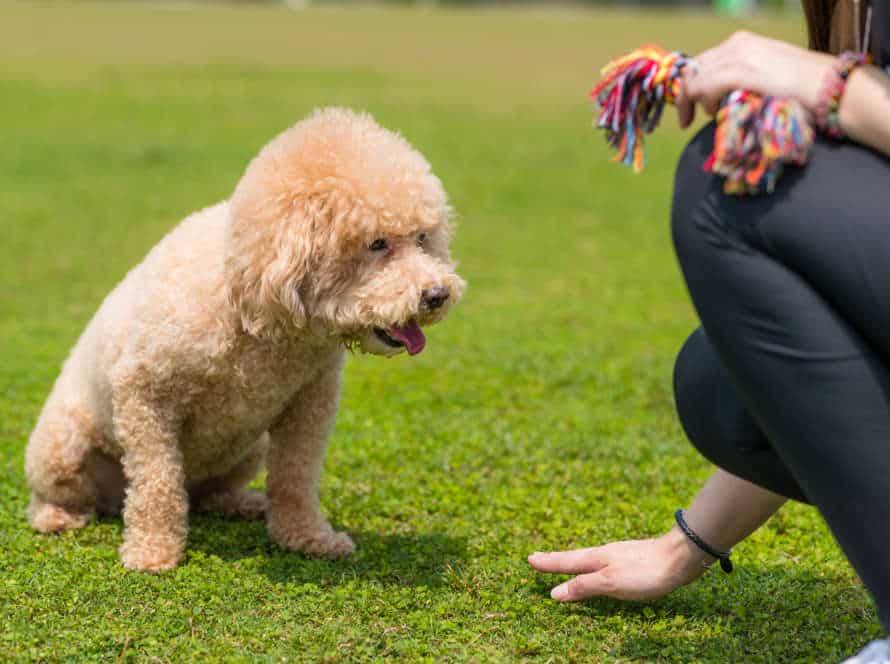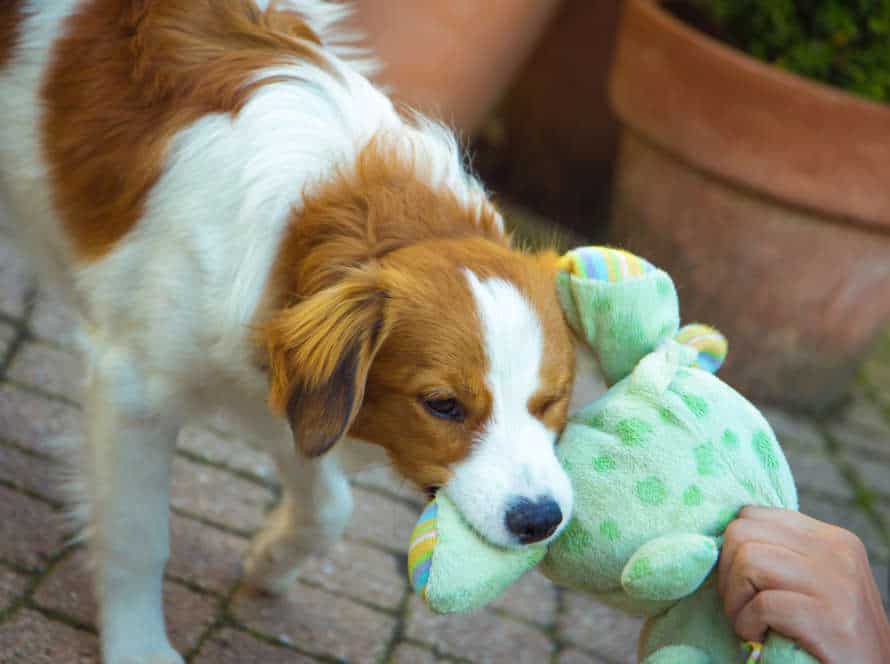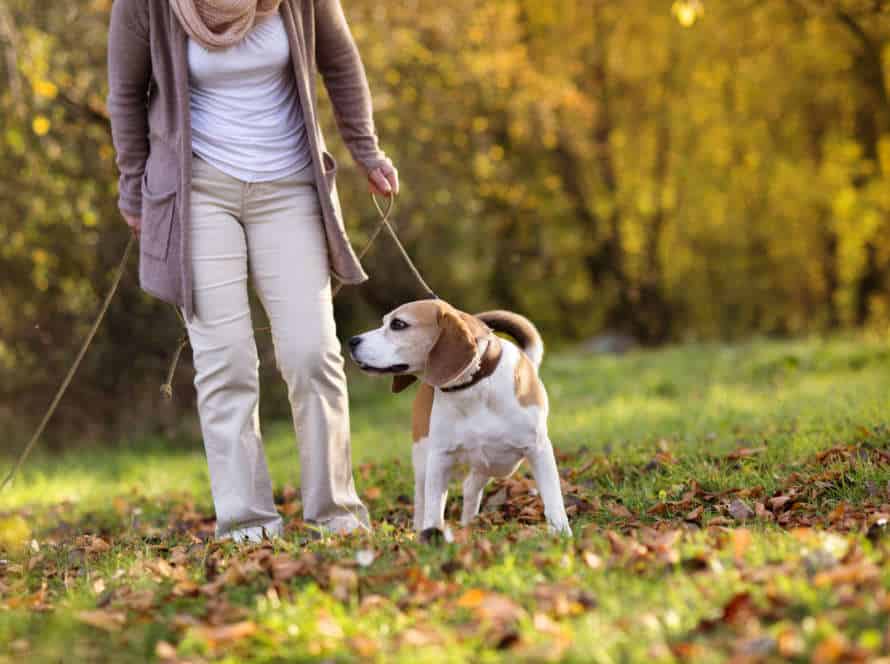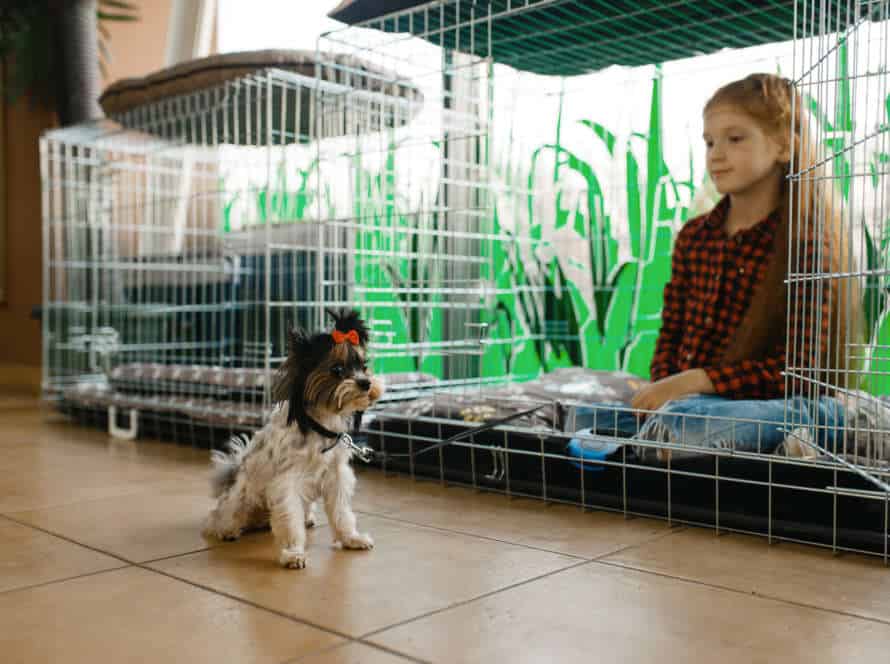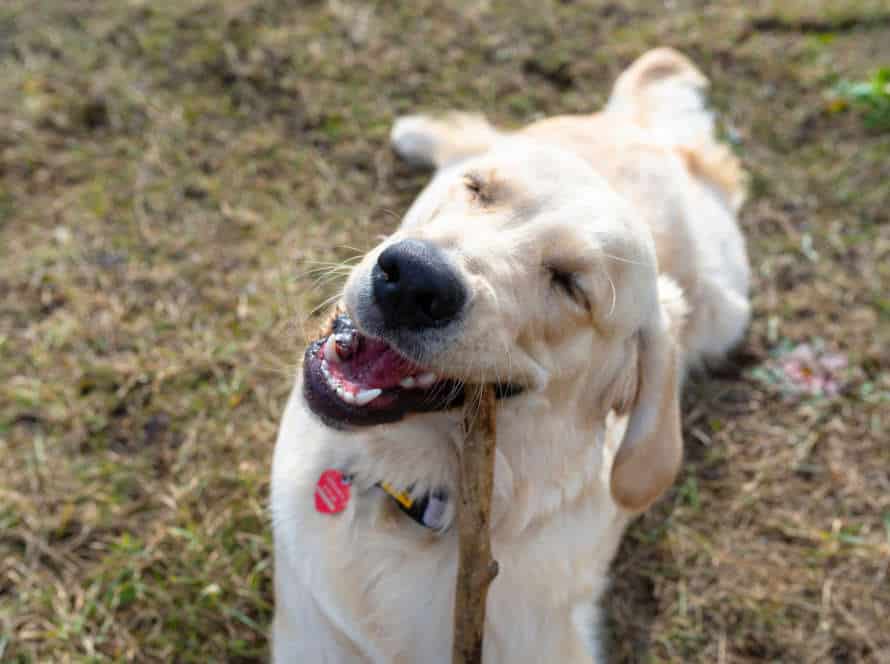Emergency Recall: How to Train Your Dog to Come in Urgent Situations
It is essential to train your pup for emergency recall for their protection in urgent cases. This includes teaching them to come when they hear a specific sound, like a whistle or the word “help”. Here are the steps for this training:
- Choose a “universal” sound, such as a whistle or a specific word.
- Give the command. Reward your dog for responding correctly.
- Practice in different places and increase the distance gradually.
- Make it fun with treats, toys, and praise.
- Remember consistency and frequent practice are key for emergency recall training to work in critical times.
Understanding the Importance of Emergency Recall
Teaching your pup emergency recall is essential! In urgent situations, like running towards a busy street or chasing an animal, you need to be able to call them back quickly. This can be a life-saving measure for them. Let’s take a look at why emergency recall is so important and how to train it.
Why Dogs Need to Learn Emergency Recall
Emergency recall is a must-have skill for all dogs, regardless of breed or size. It could save your pup’s life during an urgent situation–like running into traffic or eating something toxic.
Positive reinforcement is key. To train your dog to come immediately when called, associate a specific sound or word with treats or affection. Practice recall in a controlled environment, with minimal distractions, then slowly add more. Avoid punishment when they come back to you, as this can create bad associations. Don’t forget: emergency recall isn’t a substitute for leash and obedience training.
Pro tip: always carry treats or other rewards during outdoor trips, for a better response.
What Could Happen if Your Dog Does Not Learn Emergency Recall
Emergency recall is essential to help prevent accidents or any bad situations with your pup. Not teaching them this could lead to major issues like endangering their life, or other people’s.
To teach them emergency recall, start with the basics. Teach them commands and reward them with treats when they do it right.
To make it more challenging, add distractions. This will help prepare them for real emergency situations.
High-value treats are a must. Think cooked chicken or hotdogs. These will encourage them to come when called.
Consistency and repeating the command is key. Doing this increases their chance of responding in an emergency.
Train your dog for emergency recall. It can save their life, and protect others from harm.
Basic Recall Training
Emergency recall: the foundation!
Train your pup to respond quickly and reliably when needed. Safety first! Make recall training part of daily routine. Want success? Have a consistent, thorough program with positive reinforcement. Let’s explore the basics of recall training for dogs.
Teaching Your Dog the “Come” Command
Training your pup to ‘come’ is a major part of basic recall training. Here’s what you should know:
- Call their name and use a word like ‘come’ in a cheerful way.
- Reward and praise them when they come to you.
- Start in a place with no distractions and slowly increase the distance.
- Then, practice around distractions like parks, streets etc.
- Be sure to use a long leash and be consistent. Do 10-15 mins every day.
It takes time and patience. Don’t give up! With practice and positive reinforcement, they will soon come on command.
Learning to Use Positive Reinforcement
Positive reinforcement is the top way to teach your pup basic and emergency recall. Here’s how:
- Reward when pup responds: Praise and treats when they come on command. This links coming to you with good experiences.
- Start slow: Call pup from short distances in quiet places. Increase distance and distractions as they learn.
- Stick to one command: Always use the same phrase such as “come” or “here”. This helps them recognize the command better.
- Be positive: No scolding if pup doesn’t come. Use positive reinforcement to shape recall skills gradually.
Tip: Make recall training enjoyable with tasty treats! Do it step by step to keep pup motivated and not scared.
How to Train Your Dog to Come on Command
Training your pup to obey your commands is a must-have for being a pet parent! Not only is it great for safety in emergencies, but also for strengthening the bond between you two. Here’s how to begin recall training:
- Choose one phrase (e.g. “come”).
- Call your pup’s name and then use the command.
- Reward them with a treat when they respond positively.
- Increase distance bit by bit, starting from short distances.
Emergency recall is a special kind of recall training for urgent cases. Pick a unique command (e.g. “help” or “emergency”), and use higher rewards, a different tone, and obstacles.
Pro Tip- Rely on positive reinforcement and repetition to help your dog learn. Training takes time, patience, and consistency.
Advanced Recall Training
Recall is a must for all canine owners. Training your pup to come when there’s an emergency is key. This advanced recall can save precious time. So, let’s get into it. Here are the steps to teach your dog an improved recall in emergency situations:
- Start indoors and teach your dog the basic recall command “come”.
- Once your dog has mastered the basic recall command, it’s time to take the training outside.
- Practice in different locations with varying amounts of distractions to keep your dog’s attention focused on you.
- Start introducing high-value treats as a reward for coming when called.
- Gradually increase the distance between you and your dog, and continue to reinforce the recall command.
- Finally, practice calling your dog in emergency situations, such as when they are about to run into a busy road or towards an unsafe situation.
Teaching Your Dog to Stay Focused in a Distracting Environment
Training your pup to stay concentrated in a chaotic situation is crucial, especially for emergency recall and advanced recall training – when the safety of your pup is of utmost importance.
To begin with, practice in a quiet area that your pup is familiar with. Use a specific phrase like “Come!” or “Here!” whenever you call them.
Reward your pup with a yummy treat or toy when they come to you. Then add distractions one at a time, like other dogs or toys, to test your pup’s concentration.
Practice in environments with low to high distractions such as parks, beaches or shopping malls, until your pup can obey the recall command with ease.
Remember: for emergency situations, do not use punishment or negative reinforcement, this may cause fear and delay the response of your pup. Keep the training positive and reward-based.
Practicing Recall from a Distance
Train yer pup to come to ya from a distance. This is an advanced skill and can be really useful in emergency sitches. Here’s how to do it:
- Start with basic recall training. Be sure yer pup understands the command!
- Gradually increase the distance ‘tween you two when practicing.
- Incorporate distractions and new environments into yer recall training.
- Use a distinct recall command that yer pup can recognize and associate with coming to ya.
- Use a long leash to give yer pup freedom while keeping control.
- Reward ’em with high-value treats and plenty of praise.
- Regularly practice emergency recalls with yer pup so they’re prepared.
Pro tip: Make sure yer pup has proper ID in case they get lost in an emergency.
Working on Emergency Recall in High-Pressure Situations
Recalling your pup in tough scenarios is a must for their safety and the safety of others. Here’s what to do to train them:
- Start with simple recall in calm, secure places and increase difficulty over time.
- Choose a word or whistle they understand as the call-back signal.
- Reward them with treats each time they come back to you, especially their favorite ones.
- Teach them to sit or lie down when they return to you, especially if they’re excited.
- Practice with distractions, like toys and people, to simulate real-life scenarios.
- Simulate high-pressure moments by adding loud noises and sudden movements so your pup responds to the recall signal no matter the external factors.
Pro tip: Emergency recall isn’t a trick to show off their obedience. Practice it until they respond instinctively, even when they don’t expect it.
Tips for Maintaining Good Emergency Recall
Emergency recall with your pup is a must-have skill. It’s when you call your pup urgently and he comes running back to you, no questions asked. Here are some tips for keeping it up:
- Always reward your pup when they come back.
- Practice in different environments.
- Make sure your pup knows the command by heart.
- Keep the command simple and consistent.
- Use it only in emergencies.
Consistent, Regular Training Sessions
Consistent, regular training is essential for teaching your pup good recall in an emergency. Here are some tips for maintaining good recall:
- Start young – Begin training your dog as soon as possible to set good recall habits.
- Make it rewarding – Whenever your pup responds to your recall command, give them treats or affection.
- Practice often – Train your dog to come to you in various places and with distractions.
- Stay consistent – Do regular training sessions to keep up their recall skills.
- Use a same command – Use the same word or phrase each time for better recall.
Using these tips can help ensure that your pup knows how to come quickly and reliably in an emergency.
Avoiding Common Mistakes in Recall Training
Recall training for dogs is vital for their behavior training. It ensures safety for dogs and peace of mind for their owners. Unfortunately, some errors occur during the process. Here are tips to prevent them and maintain good emergency recall:
- Start with short distances and increase as your dog becomes better at coming to you.
- Don’t chase your dog; try walking away instead.
- Don’t call your dog if it knows it’ll be punished.
- Keep sessions short, regular, and consistent.
- Reward your dog for coming to you, even if it wasn’t urgent. This builds positive reinforcement and promotes good behavior.
Pro Tip: With patience and effort, your dog can learn successful recall and stay safe.
Encouraging Good Recall Behaviors Outside of Training Sessions
For great recall behaviors, outside of training sessions, keep these tips in mind:
- Reinforce basic training by taking your pup to the training grounds and reinforcing the “Come” and “Stay” commands.
- Reward obedience to your recall commands with positive reinforcement like treats, playtime and affection.
- Be consistent in using the same recall commands and reinforce good behavior.
- Practice recall behavior regularly in various environments.
- Never punish unsuccessful recall attempts.
Pro Tip: Essential for safety, reinforce recall training often, with treats and lots of love.
Troubleshooting Common Problems with Emergency Recall
Emergency recall is a must-have skill for all dogs. It could protect them in an emergency. But it’s not always easy. Your pup may be distracted or just ignore you! Here are some tactics to help you train them to come when called.
Dog Refuses to Come When Called
If your pup isn’t coming when called, there could be a few possible explanations. Common issues may include insufficient training, lack of motivation, distractions, fear, or stress. To troubleshoot this problem, follow the steps below to coach your dog in emergency recall:
- Pick a unique emergency recall signal, such as a whistle or a particular word, that your pup will link with a pressing situation.
- Begin training your doggy in a hushed, distraction-free setting using positive reinforcement methods such as treats, compliments, and rewards.
- Little by little, heighten the level of disturbance in the area while summoning your dog with the emergency recall signal and rewarding them for coming to you.
- Do emergency recall training on a regular basis to make it a routine for your pup.
- In an emergency, employ the emergency recall cue and reward your pup promptly upon their return.
Remember, emergency recall training requires persistence, consistency, and positive reinforcement to be successful.
Dog Loses Focus or Gets Distracted
Dogs losing focus or getting distracted while practicing emergency recall is a common issue. Here are tips to help fix that and enhance their training:
- Practice in a place with little distractions.
- Use treats your pup really loves, but not too often.
- Reinforce their behavior with treats and praise.
- Gradually extend the distance and time of their training.
- Don’t punish them, it’ll lower their enthusiasm for learning.
With regular practice, you can teach your dog to focus and respond to emergency recall cues in any scenario. This is very important since it could save their life in a crisis. So make it enjoyable for your pooch and always carry quality treats!
Pro Tip: Practice emergency recall in various environments to make it stick.
Dog Struggles with Recall in High-Stress Situations
Emergency recall is essential to ensure your pup’s safety in intense moments. Struggling? We have some common problems and how to fix them:
- Not motivated? Lure them with treats like cooked chicken or hot dogs. Also practice during playtime, reward for coming.
- Distracted? Practice in a calm environment. Increase distractions gradually. Use a firm command to grab their attention.
- Scared? Don’t scold. Praise for even the slightest progress.
- Too far away? Use a long leash. Encourage them by running backward or a happy voice.
Practice emergency recall often. Reward good behavior. Soon your pup will come running to you in urgent times, keeping them safe.
Resources for Additional Emergency Recall Training
Emergency recall training for dogs–a must-have skill for pet owners! Knowing how to train your doggo to come when called in a jiffy is key for keeping them safe in dire times. Resources for honing this skill further? Let’s have a look at the best options.
Professional Dog Trainers
Emergency recall training for your pup is essential. It teaches them to respond to commands quickly and obediently in an emergency. Professional trainers can offer more resources. Here are three:
- Long-line training: Utilize a leash to train your pup to come to you in a rush in emergency cases.
- Treat and praise training: Give treats and praise when they come to you in an emergency, to strengthen the behavior.
- Repetition training: Practice emergency recall training with your pup often, so the behavior becomes ingrained.
Trainers have the know-how and experience to adjust resources to fit your pup’s needs, allowing for the best emergency recall training.
Pro tip: Offer high-value treats when training to optimize the recall behavior!
Online Dog Training Courses
Online dog training courses provide pet owners the luxury of training their dogs in their own homes. Exercises and techniques are tailored to each pup’s individual needs and personalities.
Emergency recall is an imperative skill that every pup-parent should teach their pup. Here are some extra resources to help you use online dog training courses to teach your pup emergency recall:
- Recallers by Susan Garrett: This online course helps dogs come when called, even in dire situations. Games, drills and ideas are included to improve pup’s response.
- The Dog Training Secret: This online course offers tips and strategies for teaching specific commands, such as emergency recall. It also has a library of helpful dog-training info.
- The Online Dog Trainer: Led by Doggy Dan, this course includes training programs to teach pups emergency recall.
Books and Other Reading Materials on Emergency Recall.
Books & reading materials exist to help you teach your pup emergency recall. It’s a life-saving skill!
“The Power of Positive Dog Training” by Pat Miller gives a complete guide to positive reinforcement. Plus, it has a chapter on recall.
“When Pigs Fly!: Training Success with Impossible Dogs” by Jane Killion is great for pups with ‘challenging’ traits. It also has a section on recall.
“The Other End of the Leash”, by Patricia McConnell, explores the dog-human relationship plus how to communicate well with your pup, including recall.
“Training the Hard to Train Dog” by Peggy Swager offers tips & strategies on recall for dogs with difficult behaviors.
These resources offer valuable info & techniques to help you train your pup safely in emergency situations.
Frequently Asked Questions
Q: Why is it important to train my dog to come in urgent situations?
A: Training your dog to come on command is an essential command that can save their life in dangerous situations. If your dog runs off or is in danger, teaching them to come back to you immediately could be the difference between life and death.
Q: Can all dogs learn to come when called, regardless of their age?
A: Yes, all dogs can learn to come when called. However, the training may take longer for adult or senior dogs who have had less obedience training in the past. Puppies are easier to train as they are still learning new habits and commands.
Q: What are the best methods for training a dog to come in emergency situations?
A: Consistency is key when training your dog to come in urgent situations. A good method is to start with the command when your dog is calm and not distracted, then increase the level of distractions over time. Reward them with a treat when they come to you, and practice regularly to build their confidence in obeying the command.
Q: Should I use treats to encourage my dog to come when called?
A: Yes, using treats is an effective way to encourage your dog to come when called. However, over time as they become more consistent in their obedience, you can start to reduce the frequency of treats and use positive affirmation and encouragement instead.
Q: How long does it take to train a dog to come when called in an emergency situation?
A: The time it takes to train a dog to come in an emergency situation varies between dogs. It depends on their previous training, temperament, and level of dedication to the training process. Some dogs can learn within a few weeks, while others may take several months.
Q: Are there any tools or devices that can help train my dog to come in urgent situations?
A: There are a variety of electronic devices such as shock collars or vibrating collars that can help train your dog to come when called. However, it is recommended to start with positive reinforcement training with treats and verbal praise before resorting to electronic devices.


